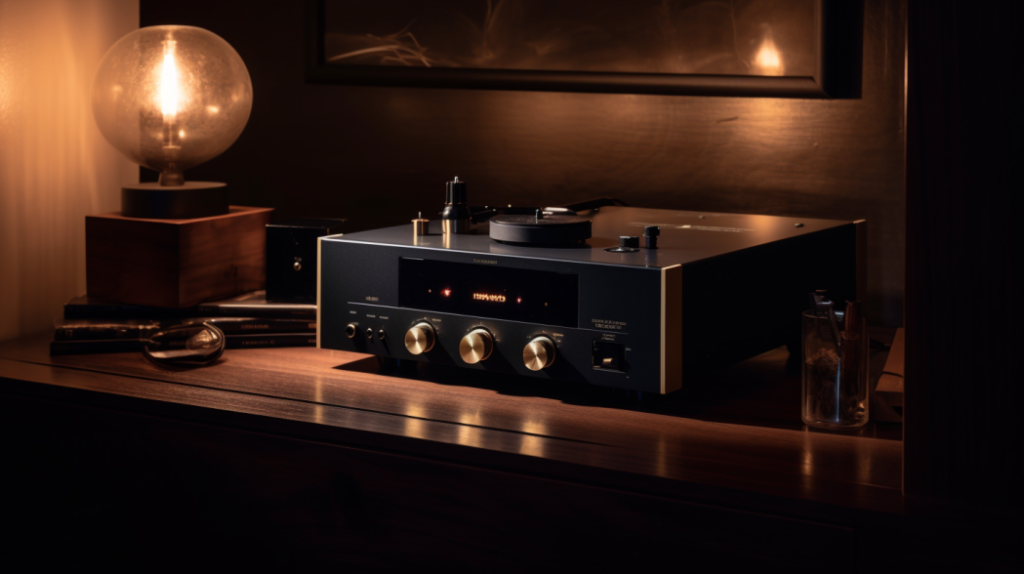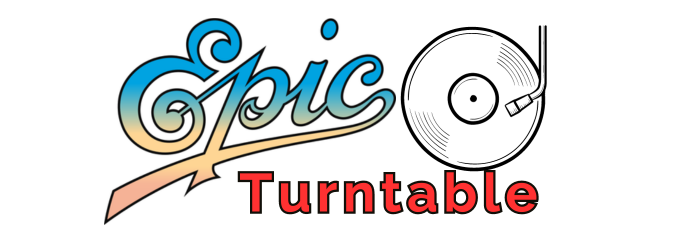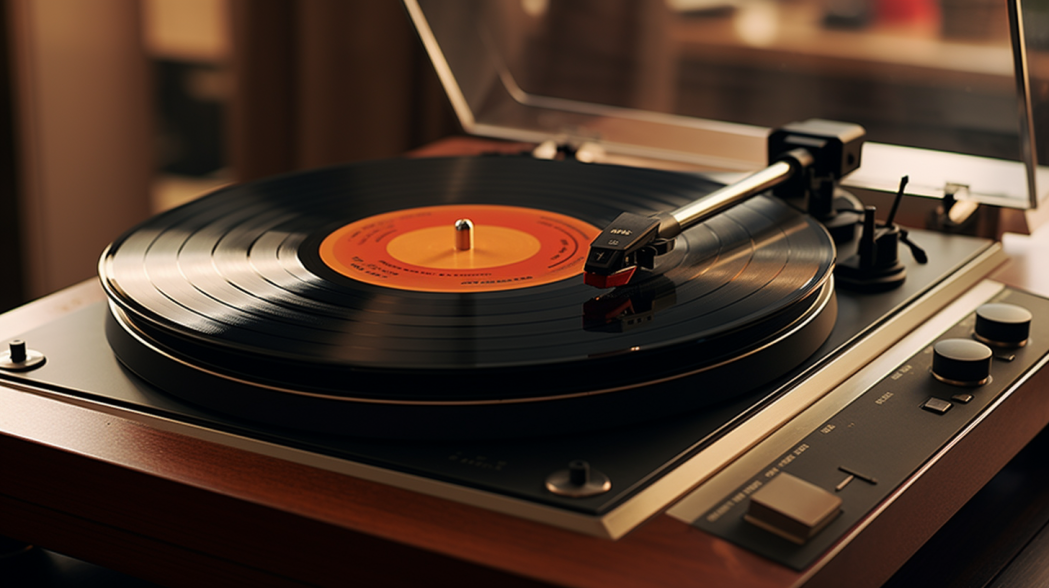Congratulations on your new turntable! Setting up a turntable can be an exciting and rewarding experience, but it can also be a little overwhelming if you’re new to the world of vinyl. Not to worry, though, because this beginner’s guide is here to help you navigate through the setup process with ease. Whether you’re a music enthusiast looking to explore the warm analog sound or a vinyl collector building your ultimate record collection, this guide will walk you through everything you need to know to get your turntable up and running smoothly. From finding the perfect spot for your setup to properly connecting your equipment, you’ll soon be enjoying the rich and immersive audio experience that vinyl has to offer. Get ready to embark on your journey into the world of turntables and let the music play!
Choosing the Right Turntable
Consider Your Budget
When it comes to choosing the right turntable, one of the first factors to consider is your budget. Turntables can range in price from affordable options for beginners to high-end, audiophile-grade models. It’s important to set a budget that aligns with your personal preferences and needs. Remember, investing in a good turntable can greatly enhance your listening experience, so it’s worth considering a mid-range option if you can afford it.
Decide Between Manual or Automatic
Another important decision to make is whether you want a manual or automatic turntable. Manual turntables require you to manually start and stop the rotation of the record, as well as lift and place the tonearm. Automatic turntables, on the other hand, offer the convenience of automatically starting and stopping with the push of a button. While manual turntables may offer more control and a sense of engagement, automatic turntables can be more practical and easier to use for beginners.
Understanding the Types of Turntables
There are different types of turntables available on the market, each with its own unique features and characteristics. Vintage turntables, for example, have a classic aesthetic and often offer a warm, nostalgic sound. Modern belt-drive turntables are known for their quiet operation and accurate speed. Direct-drive turntables, on the other hand, are favored by DJs for their fast start-up times and durability. Portable turntables are compact and designed for on-the-go listening. Consider what features are most important to you and choose a turntable that suits your preferences.
Understanding the Basic Components
Turntable Plinth
The turntable plinth, also known as the base, is the foundation of the turntable. It provides stability and helps to isolate the turntable from vibrations that could affect sound quality. Plinths are typically made of materials like wood, acrylic, or metal. It’s important to choose a turntable with a sturdy plinth that minimizes resonance and vibration.
Motor and Drive System
The motor and drive system are responsible for spinning the turntable platter. Different turntables use different types of motors, such as belt-drive or direct-drive. Belt-drive turntables use a belt to transfer power from the motor to the platter, which helps to reduce motor noise and vibrations. Direct-drive turntables, on the other hand, have the motor directly attached to the platter, providing fast start-up times and precise speed control. Consider the pros and cons of each drive system and choose the one that best suits your needs.
Tonearm and Cartridge
The tonearm is the part of the turntable that holds the cartridge and allows it to track the grooves on the record. It plays a crucial role in the sound quality and accuracy of the playback. There are different types of tonearms, including straight, S-shaped, and J-shaped arms. Each type has its own advantages and disadvantages, so it’s important to choose a tonearm that suits your preferences and needs. The cartridge is the component that holds the stylus and converts the mechanical vibrations from the record into electrical signals. Consider the type of cartridge that comes with the turntable or whether you might want to upgrade to a higher-quality cartridge in the future.
Phono Preamp
A phono preamp, also known as a phono stage, is a crucial component in the turntable setup. It amplifies the weak signal generated by the cartridge and applies the correct equalization (RIAA curve) to ensure accurate sound reproduction. Some turntables come with a built-in phono preamp, while others require an external phono preamp. If your turntable does not have a built-in phono preamp, you will need to purchase an external one or choose a receiver or amplifier that has a phono input.
Setting Up the Turntable

Finding a Suitable Location
When setting up your turntable, it’s important to find a suitable location for it. Choose a stable surface that is not prone to vibrations, such as a sturdy table or shelf. Avoid placing the turntable near speakers, subwoofers, or other sources of vibration. Keep in mind that turntables are sensitive to vibrations, so finding a quiet and stable location is essential for optimal sound quality.
Proper Placement and Isolation
In addition to finding a suitable location, proper placement and isolation of the turntable are also crucial. Use isolation devices such as Turntable Isolation Platforms or isolation feet to minimize vibrations from the surrounding environment. These devices help reduce unwanted resonance and improve sound quality. It’s also important to ensure that the turntable is placed on a level surface to prevent any tracking or playback issues.
Leveling the Turntable
Leveling the turntable is an important step to ensure accurate tracking and playback. Use a bubble level or turntable leveling tool to ensure that the turntable is perfectly level. Adjust the turntable’s feet or use shims if needed to achieve a level surface. This will help prevent the stylus from skipping or causing unnecessary wear on the record.
Connecting the Cables
To set up your turntable, you’ll need to connect the necessary cables. Start by connecting the turntable’s RCA cables to the phono input of the phono preamp or receiver. If your turntable has a ground wire, connect it to the appropriate grounding post on your receiver or phono preamp. Finally, make sure to connect the output cables from your phono preamp or receiver to your audio system or speakers. Double-check all connections to ensure a secure and proper connection.
Care and Maintenance
Cleaning the Vinyl Records

Properly cleaning your vinyl records is essential for maintaining their sound quality and longevity. Invest in a record cleaning brush or a record cleaning machine to remove dust and debris from your records. Use a record cleaning solution and a microfiber cloth to gently remove any fingerprints or smudges. Avoid using harsh chemicals or abrasive materials that can damage the record’s surface. Regular cleaning will not only improve the sound quality but also extend the life of your vinyl collection.
Replacing the Stylus
The stylus, also known as the needle, is a crucial component of the turntable’s cartridge. Over time, the stylus will wear down and will need to be replaced. A worn-out stylus can cause distortion, skipping, or even damage to your records. Check the manufacturer’s recommendations for the lifespan of your stylus and replace it as needed. It’s important to handle the stylus with care and follow the manufacturer’s instructions to ensure proper installation.
Proper Handling of Records
When handling your records, it’s important to do so with care to avoid causing damage. Always handle records by their edges and avoid touching the playing surface. Fingerprints, oils, and dirt can affect the playback quality and cause unwanted noise. When not in use, store your records in dust jackets or protective sleeves to prevent dust and scratches. Proper handling and storage will help preserve the quality of your records for years to come.
Keeping the Turntable Dust-Free
Dust can be a major concern when it comes to turntables. Dust particles can interfere with the playback quality and cause skips or pops. To keep your turntable dust-free, invest in a dust cover or turntable mat to protect it when not in use. Regularly dust the turntable’s surface and keep the surrounding area clean. Avoid smoking or eating near the turntable, as these activities can introduce particle buildup and damage the delicate components.
Fine-tuning the Sound
Adjusting the Tracking Force
The tracking force refers to the downward pressure that the stylus applies to the record. It’s essential to set the tracking force correctly to prevent unnecessary wear on the stylus and the record itself. Consult the manufacturer’s instructions for the recommended tracking force for your specific cartridge. Use a tracking force gauge or measure to ensure accurate calibration.
Setting the Anti-skate
The anti-skate setting helps to counterbalance the outward force exerted on the tonearm as the stylus tracks the record. Correct anti-skate adjustment ensures that the stylus stays centered in the groove and minimizes distortion or tracking errors. Consult the turntable’s manual or manufacturer’s instructions for the recommended anti-skate setting. Use an anti-skate adjustment tool or gauge to set it accurately.
Calibrating the Cartridge Alignment
Proper cartridge alignment is crucial for accurate sound reproduction and extended stylus life. The alignment ensures that the stylus tracks the record’s grooves properly and minimizes distortion or wear. Use a cartridge alignment protractor or tool to align the cartridge correctly. Follow the manufacturer’s instructions or consult professional resources for guidance on aligning your specific cartridge.
Optimizing the VTA
VTA, or vertical tracking angle, refers to the angle at which the tonearm meets the record’s surface. Proper VTA adjustment can greatly impact the sound quality and tracking accuracy. Some turntables have adjustable VTA, while others have a fixed angle. Consult the turntable’s manual or manufacturer’s instructions for proper VTA adjustment. Small adjustments can be made by adding or removing shims between the tonearm and the turntable’s base.
Troubleshooting Common Issues
Turntable Not Spinning
If your turntable is not spinning, there could be several reasons for this issue. Check that the power cord is securely plugged in and the power switch is in the ON position. Ensure that the drive belt (if applicable) is properly installed and not worn or stretched. If you have a direct-drive turntable, make sure the motor is functioning correctly. If the issue persists, consult the turntable’s manual or contact the manufacturer for further assistance.
Excessive Noise or Hum
Excessive noise or hum can be caused by various factors. Check that the turntable’s ground wire is properly connected to a grounding point on your receiver or phono preamp. Ensure that the cables are securely connected and free from any physical damage. Avoid placing the turntable near electronic devices or power sources that may introduce interference. If the noise or hum persists, consider using a dedicated power conditioner or consulting a professional for further troubleshooting.
Skips or Jumps
Skips or jumps during playback can be frustrating. Ensure that the turntable is placed on a stable surface and that it is properly leveled. Check that the tonearm and cartridge are aligned correctly and that the stylus is clean and free from debris. Avoid playing heavily damaged or warped records, as they can cause playback issues. If the problem persists, it may be necessary to consult professional assistance or consider upgrading certain components of your turntable setup.
Stylus Tracking Problems
Stylus tracking problems can manifest as distortion, mistracking, or uneven audio balance. Check the tracking force and anti-skate settings to ensure they are properly calibrated. Ensure that the stylus is clean and free from debris or buildup. Consider upgrading to a higher-quality cartridge or stylus if tracking issues persist. If you are unsure how to troubleshoot or resolve tracking problems, it’s recommended to seek assistance from an experienced turntable technician or audio professional.
Expanding Your Setup
Adding a Phono Preamp

If your turntable does not have a built-in phono preamp or you want to upgrade the sound quality, consider adding an external phono preamp to your setup. External phono preamps can provide enhanced amplification and equalization, resulting in improved sound reproduction. Choose a phono preamp that matches your budget and sonic preferences, and ensure compatibility with your turntable and audio system.
Upgrading the Cartridge
The cartridge is an essential component of your turntable setup, and upgrading it can have a significant impact on sound quality. Higher-quality cartridges offer improved tracking, wider frequency response, and better detail retrieval. Consider your budget and sonic preferences when selecting a new cartridge. Research reputable brands and consult expert reviews to find a cartridge that complements your turntable and enhances your listening experience.
Enhancing the Sound with External Accessories
There are various external accessories available to enhance the sound quality and functionality of your turntable setup. Consider investing in a quality phono cable to improve signal transmission and reduce interference. Acoustic treatments such as record mats, isolation platforms, or damping materials can help reduce resonance and improve sound clarity. You might also explore the option of adding a turntable preamp or a headphone amplifier to further enhance your listening experience.
Exploring Different Record Players
Vintage Turntables
Vintage turntables offer a unique charm and often feature high-quality craftsmanship. They can provide a warm, nostalgic sound that many audiophiles appreciate. Vintage turntables may require more maintenance and stylus replacements due to age, but they can be a rewarding option for those who appreciate classic design and traditional audio reproduction.
Modern Belt-Drive Turntables

Modern belt-drive turntables are popular among audiophiles for their quiet operation and accurate speed control. They utilize a belt to transfer power from the motor to the platter, resulting in reduced motor noise and vibrations. Belt-drive turntables often offer precise playback and come in a variety of price ranges, making them accessible to both beginners and seasoned vinyl enthusiasts.
Direct-Drive Turntables
Direct-drive turntables are favored by DJs and audiophiles who value fast start-up times and durability. Unlike belt-drive turntables, direct-drive models have the motor directly attached to the platter, providing instant start-up and precise speed control. They are known for their stability, consistent speed, and ability to handle heavy scratching and cueing. Direct-drive turntables are a popular choice for those who prioritize performance and reliability.
Portable Turntables
Portable turntables are compact and designed for on-the-go listening. They often feature built-in speakers, battery operation, and USB connectivity, allowing you to enjoy your vinyl collection anywhere. While portable turntables may not offer the same level of sound quality as larger models, they can be a fun and convenient option for vinyl enthusiasts who want to share their music with friends or enjoy vinyl outside of the traditional home setup.
Building a Vinyl Collection
Buying New vs. Used Records
When building a vinyl collection, you have the option of buying new or used records. New records offer the advantage of pristine condition and often come with digital download codes for convenience. They also allow you to support current artists and labels. On the other hand, used records offer the opportunity to discover hidden gems and explore different genres and eras. They can be more budget-friendly, but it’s important to carefully inspect used records for any signs of damage or wear before purchasing.
How to Store and Organize Your Records
Proper storage and organization of your vinyl records are essential for their longevity and easy access. Invest in record storage solutions such as record crates, shelves, or bins that provide adequate support and protection. Keep records stored vertically to prevent warping. Consider organizing your collection alphabetically, by genre, or by personal preference to make it easier to find and enjoy your favorite records.
Finding and Evaluating Quality Vinyl
Finding quality vinyl records can be an exciting part of building your collection. Explore local record stores, online marketplaces, and record fairs to discover new releases, rare finds, and hidden gems. When evaluating vinyl records, inspect them carefully for any signs of damage, such as scratches, warping, or skipping. Pay attention to the condition of the album cover, inner sleeves, and any included inserts or artwork. Research reputable sellers and read customer reviews to ensure a trustworthy purchase.
Learning the Art of Vinyl Maintenance
Cleaning and Care Tips
Proper cleaning and care of your vinyl records are essential for maintaining their condition and sound quality. Invest in a record cleaning brush or machine to remove dust and debris. Use a record cleaning solution and a microfiber cloth to gently remove fingerprints or smudges. Avoid using harsh chemicals or abrasive materials that can damage the record’s surface. Regular cleaning will not only improve sound quality but also extend the life of your vinyl collection.
Fixing Warped Vinyl
Warped vinyl records can be a common issue, especially with older or improperly stored records. To fix warps, you can try using a record weight or clamp to flatten the record over time. Place the warped record between two flat and heavy objects, such as books, and leave it for a period of time. If the warp is severe or does not improve, it may be best to replace the record to avoid playback issues.
Restoring Old and Damaged Records
Restoring old and damaged records can be a rewarding but delicate process. If your records have scratches or skips, consider using a record cleaning machine or a manual cleaning solution to clean and remove debris. For deeper scratches, there are specialized vinyl record repair kits available that can help fill and smooth out the scratches. It’s important to follow the instructions carefully and do extensive research or consult a professional before attempting any significant restoration techniques.
Long-Term Preservation
Long-term preservation of vinyl records requires proper storage and care. Store records in a cool and dry environment to prevent mold or moisture damage. Avoid exposing records to extreme temperatures or direct sunlight, as these conditions can warp or damage the vinyl. Consider investing in archival-quality inner sleeves to protect the records from dust and static electricity. Regularly inspect your collection for signs of damage and address any issues promptly to ensure the longevity of your vinyl records.

Hi there! I’m Eric Hoffman, the author behind EpicTurntable.com. I’m passionate about revolutionizing your music experience through vinyl. At EpicTurntable.com, you’ll find everything you need – from turntables and vinyl records to accessories. Whether you’re an audiophile or just starting out, I offer expert reviews, insightful articles, and the latest trends in the world of turntables. Dive into our community forums to connect with fellow vinyl lovers, or explore our online store for exclusive deals. Join me at EpicTurntable.com, where I’m dedicated to bringing you the classics and the latest hits all in one place!

